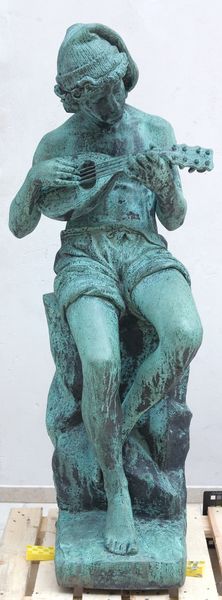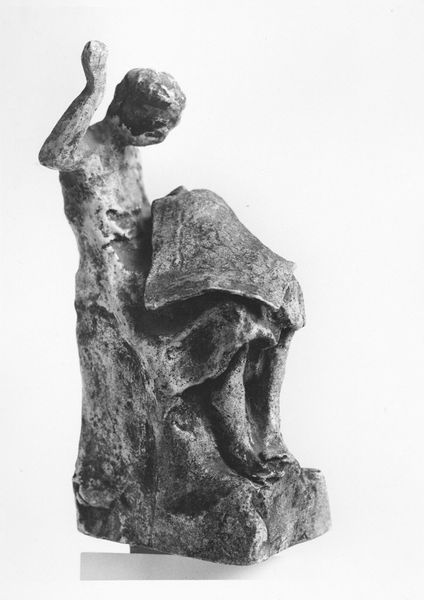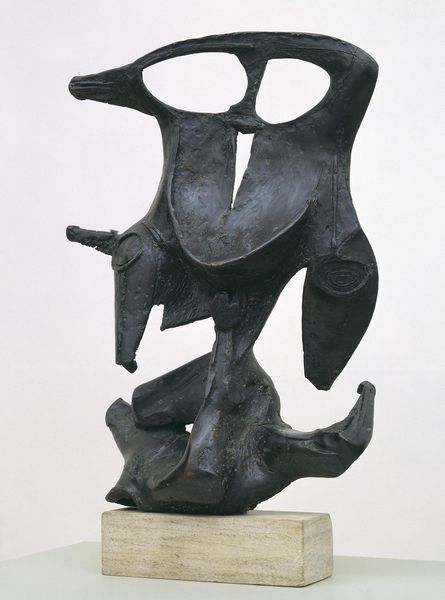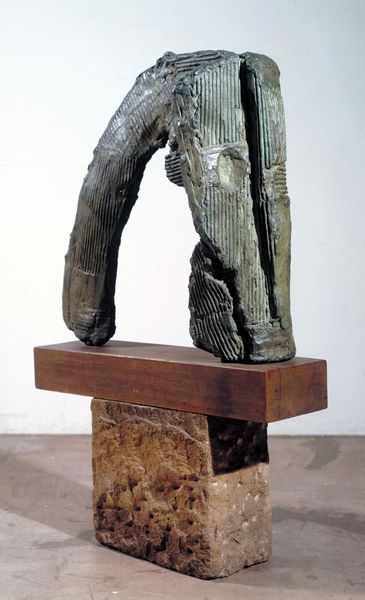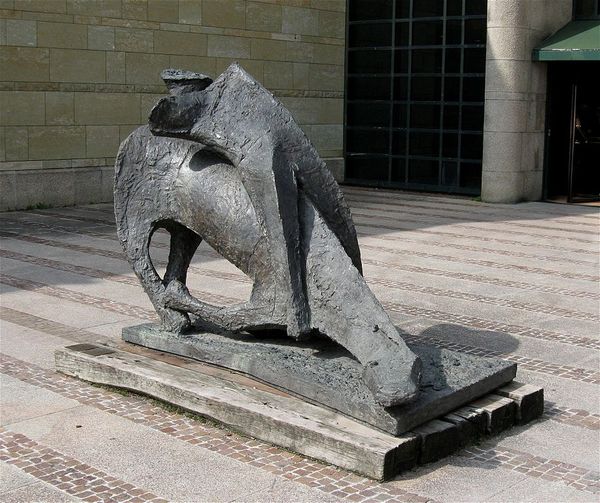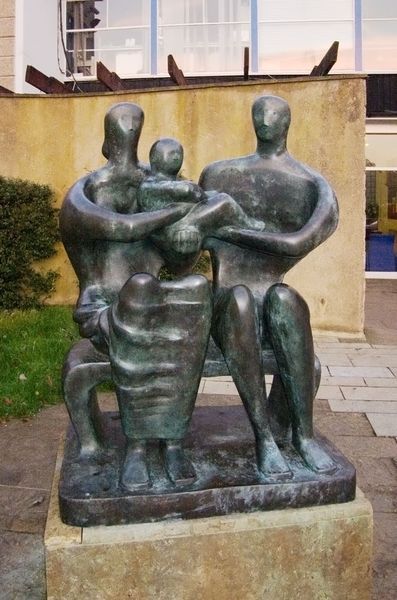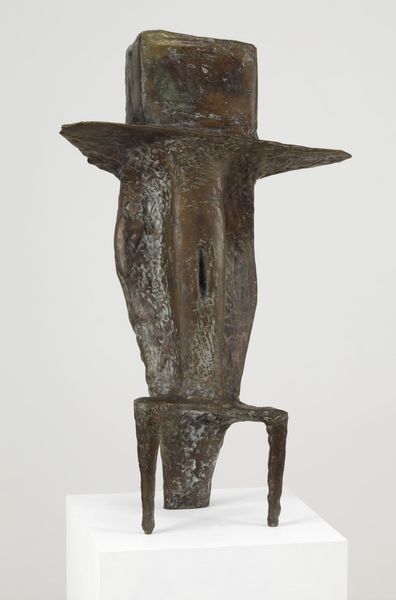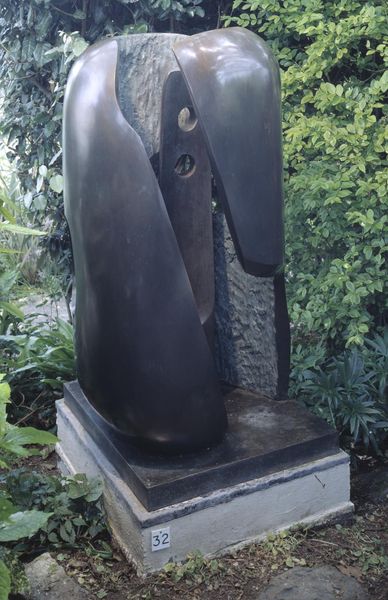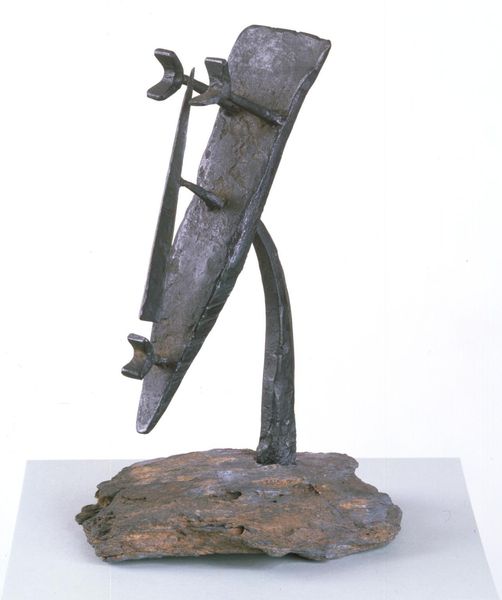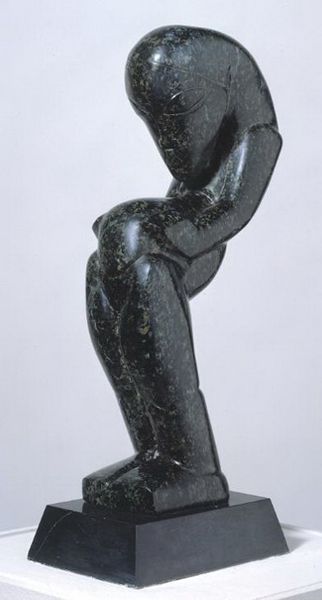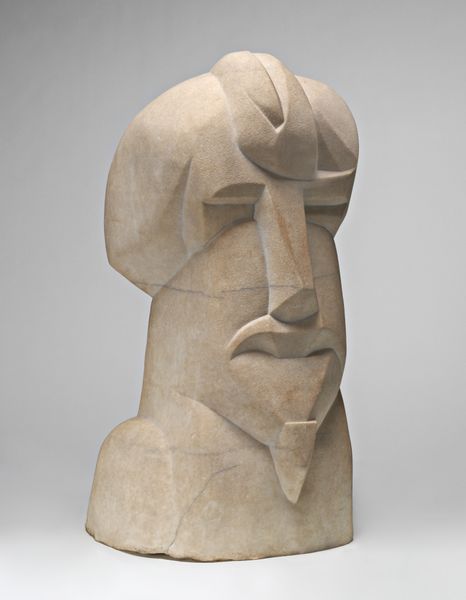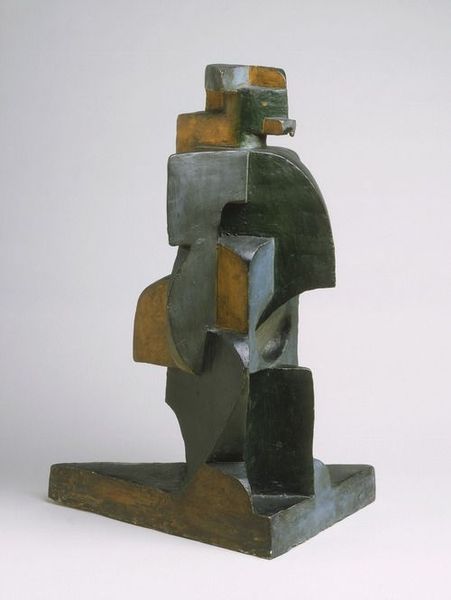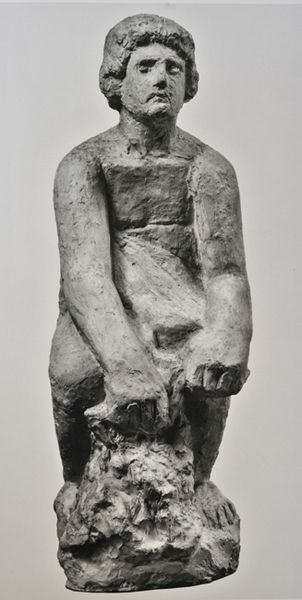
carving, sculpture
#
abstract-expressionism
#
carving
#
sculpture
#
figuration
#
form
#
sculpture
#
the-seven-and-five-society
#
modernism
Copyright: Henry Moore,Fair Use
Curator: Look at this intriguing sculpture. This is “Relief” by Henry Moore, created in 1959. It's currently housed at the Israel Museum in Jerusalem. Editor: The instant impression is one of monumentality, yet somehow burdened. That dark bronze or greenish patina whispers of something unearthed, a figure struggling out of the earth, doesn't it? Curator: It’s stone carving, which, of course, explains the "unearthed" quality! And your first impression is apt. Moore’s work, while deeply modern, often references ancient, primal forms. You can see a figure there, but it’s also a landscape. Editor: Ah, a merging! That almost geological texture works beautifully. What really strikes me is how Moore utilizes negative space. Those deeply carved areas—are they wounds? Windows? Curator: That’s Moore all over. It’s not so much about rendering a perfect figure but exploring how mass and void can express the human condition. The abstracted form suggests universal themes like mother and child or even a deity. The piece invites your personal interpretation of form, existence, what it feels to live. Editor: So the viewer is invited to complete the symbolism themselves... it’s like he’s tapping into shared cultural memory, echoing figures and stories from centuries ago while forging something undeniably new. You feel this burden or potential emerging from within. I read the work as speaking to the enduring power of the human spirit. Curator: An optimist then, you are. I tend to see in it both hope and weariness. Editor: A nice tension. Maybe we’re both right – it reflects us too. It gives much more when you've heard it described and analyzed. It is very deep! Curator: I’ll buy that, editor. Always great to re-view pieces when one has a completely other angle or interpretation than one's own.
Comments
No comments
Be the first to comment and join the conversation on the ultimate creative platform.

